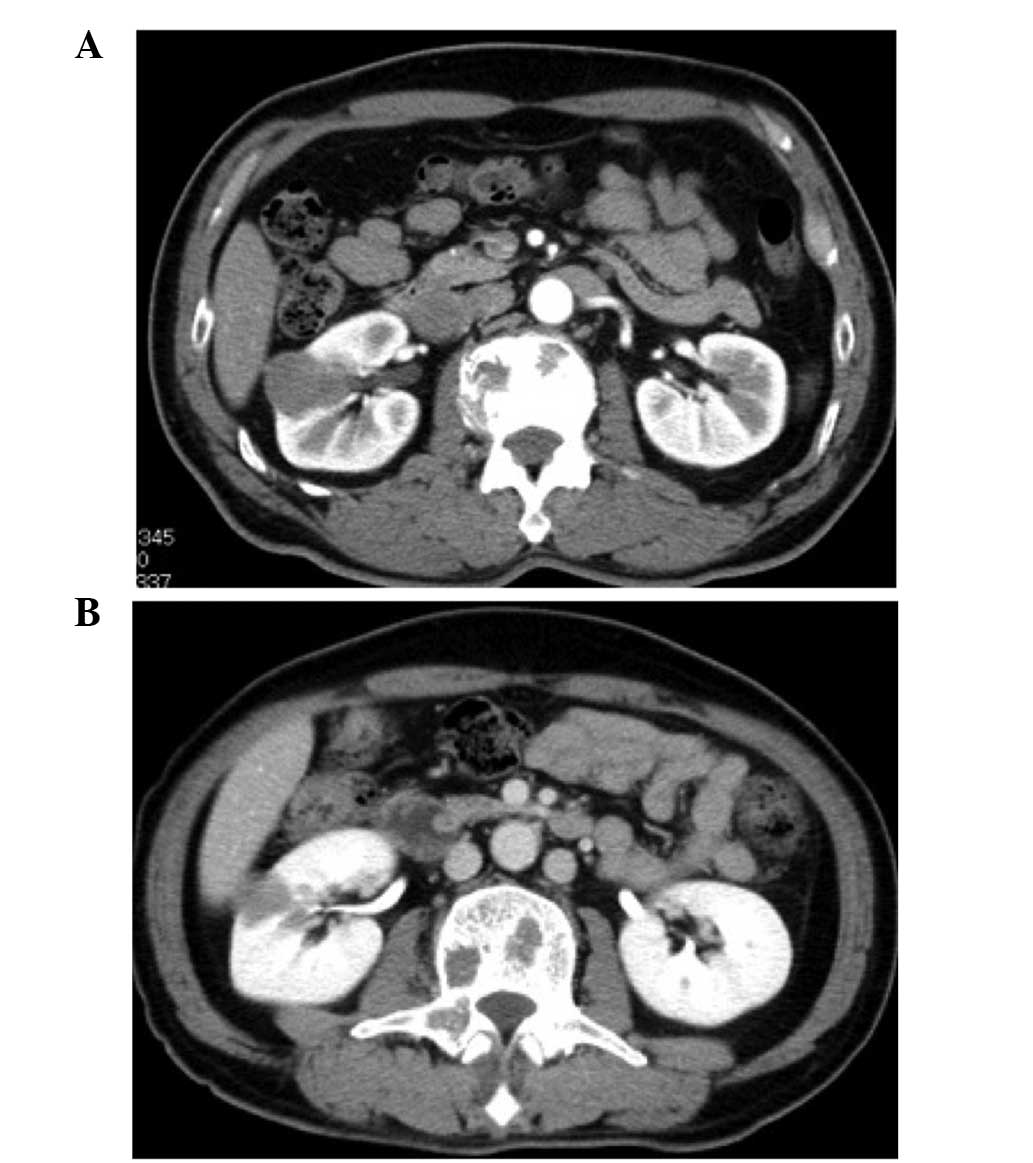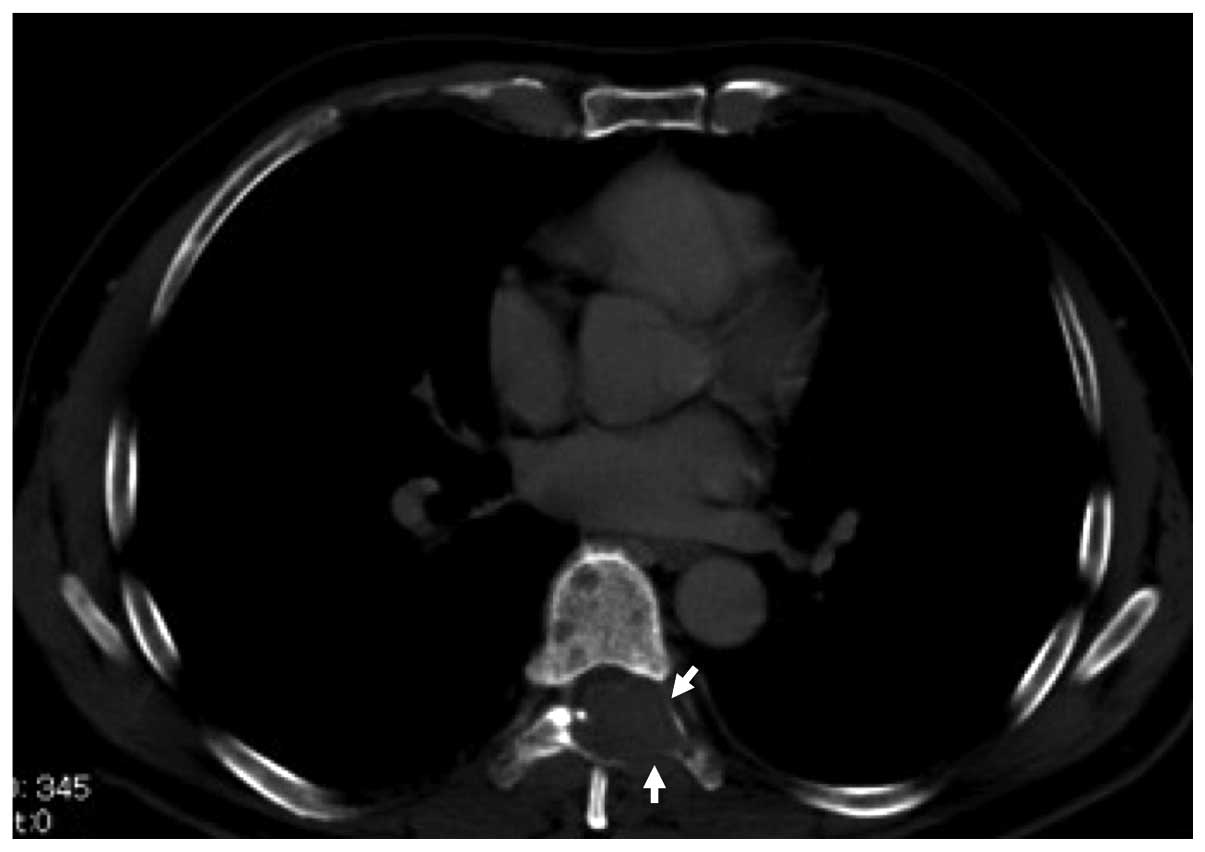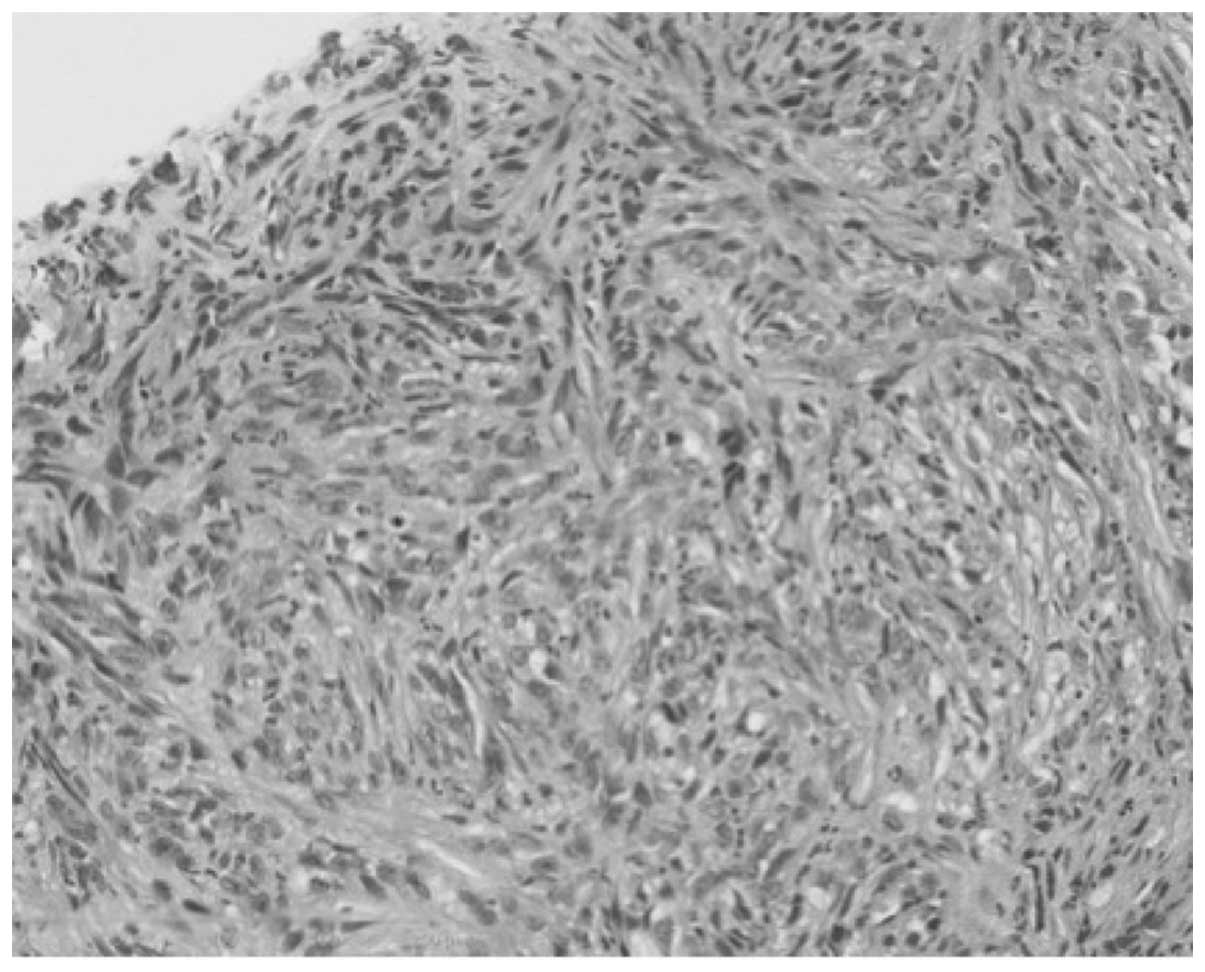Successful mammalian target of rapamycin inhibitor maintenance therapy following induction chemotherapy with gemcitabine and doxorubicin for metastatic sarcomatoid renal cell carcinoma
- Authors:
- Kazuyuki Numakura
- Norihiko Tsuchiya
- Susumu Akihama
- Takamitsu Inoue
- Shintaro Narita
- Mingguo Huang
- Shigeru Satoh
- Tomonori Habuchi
-
View Affiliations
Affiliations: Department of Urology, Akita University Graduate School of Medicine, Akita 010‑8543, Japan
- Published online on: May 7, 2014 https://doi.org/10.3892/ol.2014.2118
-
Pages:
464-466
Metrics:
Total
Views: 0 (Spandidos Publications: | PMC Statistics:
)
Metrics:
Total PDF Downloads: 0 (Spandidos Publications: | PMC Statistics:
)
This article is mentioned in:
Abstract
This study presents a case of metastatic sarcomatoid renal cell carcinoma (RCC) treated with systemic chemotherapy followed by mammalian target of rapamycin inhibitor maintenance therapy. A 63‑year‑old male presented with lumbago, and lumbar vertebral tumors were detected by magnetic resonance imaging. Subsequent computed tomography (CT) revealed a right renal tumor and CT‑guided biopsy of the right renal and left sacroiliac tumors determined pure sarcomatoid carcinoma without a clear cell component. Two cycles of combination chemotherapy comprising of gemcitabine (1,500 mg/m2 on day one) and doxorubicin (50 mg/m2 on day one) resulted in a 20% reduction in the longest diameter of the right renal tumor. However, due to grade 3 neutropenia, the chemotherapy was discontinued and temsirolimus (25 mg once weekly), which binds to the cytoplasmic protein, FKBP-12, and inhibits mTOR, was administered. Stable disease was maintained for 19 months with temsirolimus and no major adverse events, with the exception of grade 2 nausea, were observed. The patient succumbed to their disease at 30 months following the initiation of treatment. These results suggested that systemic chemotherapy followed by temsirolimus maintenance is a feasible treatment option for patients with metastatic sarcomatoid RCC.
View References
|
1
|
Sun M, Thuret R, Abdollah F, et al:
Age-adjusted incidence, mortality, and survival rates of
stage-specific renal cell carcinoma in North America: a trend
analysis. Eur Urol. 59:135–141. 2011.
|
|
2
|
Basso M, Cassano A and Barone C: A survey
of therapy for advanced renal cell carcinoma. Urol Oncol.
24:121–133. 2010.
|
|
3
|
de Peralta-Venturina M, Moch H, Amin M, et
al: Sarcomatoid differentiation in renal cell carcinoma: a study of
101 cases. Am J Surg Pathol. 25:275–284. 2001.
|
|
4
|
Haas NB, Lin X, Manola J, et al: A phase
II trial of doxorubicin and gemcitabine in renal cell carcinoma
with sarcomatoid features: ECOG 8802. Med Oncol. 29:761–767.
2012.
|
|
5
|
Molina AM, Tickoo SK, Ishill N, et al:
Sarcomatoid-variant renal cell carcinoma: treatment outcome and
survival in advanced disease. Am J Clin Oncol. 34:454–459.
2011.
|
|
6
|
Tannir NM, Plimack E, Ng C, et al: A phase
2 trial of sunitinib in patients with advanced non-clear cell renal
cell carcinoma. Eur Urol. 62:1013–1019. 2012.
|
|
7
|
Nanus DM, Garino A, Milowsky MI, et al:
Active chemotherapy for sarcomatoid and rapidly progressing renal
cell carcinoma. Cancer. 101:1545–1551. 2004.
|
|
8
|
Hudes G, Carducci M, Tomczak P, et al:
Temsirolimus, interferon alfa, or both for advanced renal-cell
carcinoma. N Engl J Med. 356:2271–2281. 2007.
|
|
9
|
Areses MC, Herranz UA, Ferrán BB, et al:
Temsirolimus in renal cell carcinoma with sarcomatoid
differentiation: a report of three cases. Med Oncol. 29:795–798.
2012.
|
|
10
|
Staehler M, Haseke N, Roosen A, et al:
Sorafenib after combination therapy with gemcitabine plus
doxorubicine in patients with sarcomatoid renal cell carcinoma: a
prospective evaluation. Eur J Med Res. 15:287–291. 2010.
|
|
11
|
Michaelson DF, McDermott MB, Atkins DC, et
al: Phase II trial of sunitinib and gemcitabine in patients with
sarcomatoid and/or poor-risk metastatic renal cell carcinoma. J
Clin Oncol. 28(suppl 15): e150762010.
|
|
12
|
Corradetti MN and Guan KL: Upstream of the
mammalian target of rapamycin: do all roads pass through mTOR?
Oncogene. 25:6347–6360. 2006.
|













